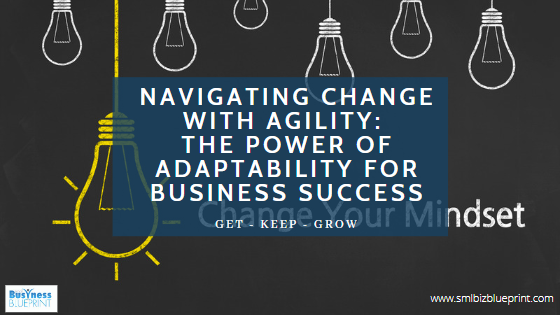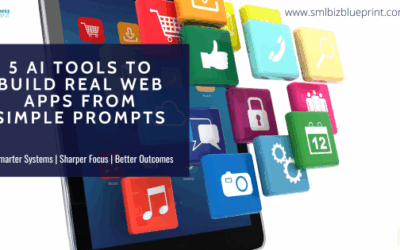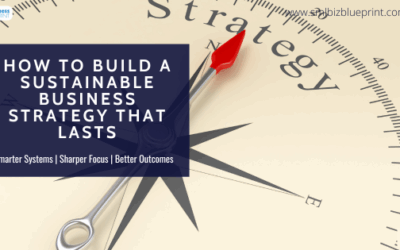In the ever-changing business world, success depends on how well an organisation can navigate change and adapt to new circumstances.
The ability to embrace change and remain agile is crucial for businesses to thrive in today’s dynamic landscape.
In this article, we will explore the transformative power of adaptability for business success. From embracing innovation to fostering a growth mindset, we’ll uncover 10 essential tips to help businesses navigate change, seize opportunities, and achieve long-term success.

Embrace a Growth Mindset: Growth Mindset – Unlocking the Potential Within
To embrace change and foster adaptability, businesses must cultivate a growth mindset—believing that challenges can be turned into opportunities for learning and growth.
By adopting a growth mindset, businesses can encourage employees to embrace change, take calculated risks, and continuously improve.
Example: Apple Inc., under the leadership of Steve Jobs, embraced a growth mindset, challenging the status quo and consistently pushing boundaries with innovative products like the iPhone and iPad.
Stay Agile: Agility – The Key to Navigating Change
Agility is the ability to respond quickly and effectively to change.
Agile organisations are nimble, adaptable, and can seize opportunities in dynamic markets.
Businesses can easily navigate change by embracing an agile mindset and implementing agile methodologies.
Example: Netflix, originally a DVD rental company, embraced agility by pivoting to a streaming model and continually evolving its content offerings. This agility allowed them to become a global leader in the entertainment industry.
Foster Innovation: Innovation – Igniting the Spark of Success
Innovation is vital for businesses to adapt to changing market demands and stay ahead of the competition.
By fostering a culture of innovation, businesses can encourage employees to generate creative ideas, explore new technologies, and identify growth opportunities.
Example: Tesla revolutionised the automotive industry by challenging conventional norms and embracing electric vehicle technology. Their commitment to innovation and sustainability has made them a frontrunner in the market.

Customer-Centricity: Putting Customers at the Heart of Change
To navigate change successfully, businesses must prioritise customer needs and preferences.
By understanding customer behaviour and feedback, businesses can adapt their products, services, and experiences to meet evolving demands.
Example: Amazon, known for its customer obsession, continually adapts its offerings based on customer insights and preferences. Their ability to personalise recommendations and enhance the shopping experience has solidified their position as an e-commerce giant.
Embrace Technology: Technological Transformation – Unlocking New Possibilities
Technology plays a crucial role in enabling businesses to adapt and thrive.
By embracing digital transformation, businesses can leverage emerging technologies, streamline processes, and enhance customer experiences.
Example: Airbnb disrupted the hospitality industry by leveraging technology to connect homeowners with travellers worldwide. Their digital platform transformed how people find accommodation, providing a more personalised and immersive experience.
Cross-Functional Collaboration: Collaboration – The Fuel for Adaptive Success
Collaboration across departments and teams is essential for businesses to adapt to change effectively.
By breaking down silos and fostering cross-functional collaboration, businesses can leverage diverse perspectives, share knowledge, and drive innovation.
Example: Google fosters a culture of collaboration through open workspaces, collaborative projects, and cross-functional teams. This collaboration fuels their ability to adapt to evolving technology trends and deliver innovative solutions.

Continuous Learning: Learning – The Fuel for Adaptability
Continuous learning is key to adaptability.
By encouraging employees to pursue ongoing professional development, businesses can equip them with the necessary skills and knowledge to navigate change and drive innovation.
Example: Microsoft promotes a culture of continuous learning through its internal learning platform, Microsoft Learn. Employees are encouraged to engage in self-paced learning, attend training programs, and gain new certifications, enabling them to adapt to evolving technologies and market demands.
Data-Driven Decision Making: Data – The Navigator in Changing Tides
Data is a powerful tool in guiding businesses through change.
By leveraging data analytics and insights, businesses can make informed decisions, identify emerging trends, and tailor their strategies to meet evolving market demands.
Example: Netflix utilises data-driven decision-making to analyse viewer preferences, content consumption patterns, and user feedback. This data-driven approach allows them to curate personalised recommendations and create original content that resonates with their audience.
Flexibility in Operations: Flexibility – The Backbone of Adaptability
Flexibility in operations is crucial for businesses to adapt to changing market conditions.
By implementing flexible processes, supply chains, and organisational structures, businesses can quickly respond to shifts in demand and optimise their operations.
Example: Zara, a global fashion retailer, has built its success on a flexible supply chain and responsive production processes. This agility allows them to quickly bring new fashion trends to market, adapting to changing customer preferences in real time.

Proactive Scenario Planning: Scenario Planning – Charting the Course Ahead
Proactive scenario planning involves anticipating potential challenges and opportunities and developing contingency plans.
By envisioning different future scenarios and preparing strategies to address them, businesses can navigate change with greater resilience and agility.
Example: The Walt Disney Company excels in proactive scenario planning, considering various possibilities and creating contingency plans for unexpected events. This approach allows them to adapt their operations, mitigate risks, and continue providing magical experiences to guests.
Conclusion:
Adaptability is fundamental for businesses seeking long-term success in a dynamic and ever-changing landscape.
By embracing a growth mindset, staying agile, fostering innovation, and prioritising customer-centricity, businesses can navigate change, seize opportunities, and remain competitive.
Additionally, leveraging technology, promoting cross-functional collaboration, and embracing continuous learning is essential in building a culture of adaptability. With data-driven decision-making, flexibility in operations, and proactive scenario planning, businesses can stay ahead of the curve and thrive in a rapidly evolving world.
Remember, adaptability is not a one-time achievement but a continuous journey. By integrating these 10 tips into your business practices, you can unleash the power of adaptability and chart a successful course through navigating change.
Embrace the transformative potential of adaptability and embark on a future-ready path to sustainable growth and innovation.
FAQ:
Q: How can adaptability benefit businesses in times of uncertainty?
A: Adaptability allows businesses to navigate uncertainty by quickly responding to changing circumstances, identifying new opportunities, and adjusting strategies to remain resilient and competitive.
Q: What role does innovation play in business adaptability?
A: Innovation is crucial for businesses to adapt to changing market demands. By fostering a culture of innovation, businesses can continually evolve their products, services, and processes to meet evolving customer needs.
Q: How can businesses foster a growth mindset among employees?
A: Businesses can foster a growth mindset by promoting a learning culture, encouraging experimentation, and rewarding initiative and resilience. Providing opportunities for professional development and promoting open communication also contribute to nurturing a growth mindset.
Q: How can businesses leverage data in adapting to change?
A: Businesses can leverage data to gain insights into customer behaviour, market trends, and operational performance. Businesses can make informed decisions, optimise strategies, and identify new growth opportunities by analysing data.
Q: What steps can businesses take to promote cross-functional collaboration?
A: Businesses can promote cross-functional collaboration by creating a collaborative work environment, facilitating knowledge-sharing platforms, organising cross-departmental projects, and encouraging open communication. By breaking down silos and fostering collaboration, businesses can leverage diverse perspectives, enhance problem-solving capabilities, and drive innovation.
In conclusion, adaptability is desirable and necessary for businesses to thrive in an ever-changing world.
By embracing a growth mindset, staying agile, fostering innovation, prioritising customer-centricity, leveraging technology, promoting cross-functional collaboration, and continuously learning, businesses can navigate change with resilience and seize new opportunities.
With data-driven decision-making, operational flexibility, and proactive scenario planning, businesses can chart a course towards success, even in uncertain times.
Remember, adaptability is not a one-time accomplishment but an ongoing journey. Embrace the power of adaptability as the driving force behind your business’s growth and evolution.
Be open to change, be willing to learn, and be ready to embrace new possibilities. By incorporating these principles into your business strategy, you can confidently navigate change, secure long-term success, and remain ahead of the curve.




